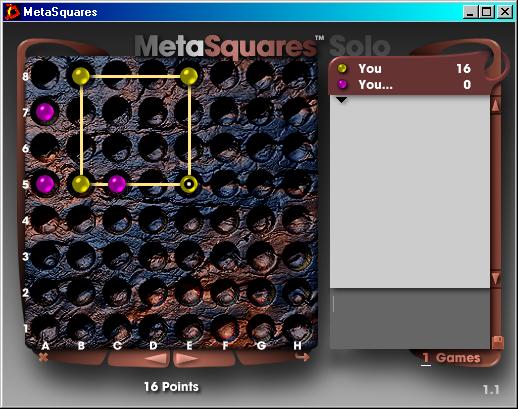
Yellow makes a square!
First, you can't play if you don't have the game! If you have not done so already, download Metasquarer and install it.
These tutorials are designed to help beginners learn the basics of the game. Like games such as Chess and Go, the rules themselves are extremely simple, but the game is of great complexity. The best way to learn is to play!
We now have an interactive Flash tutorial, as well as the conventional non-flash one. Enjoy!
The rules are simple. The game takes place on an 8x8 board, which you and
your opponent take turns placing stones on. Stones, once placed, are immobile. The object of the game is to form squares using the arrangement of these pieces.

Yellow makes a square!
Observe that the square I just formed is worth 16 points. You must satisfy two conditions to win:
The larger the square, the more points it is worth!
Easy, right? It gets harder:
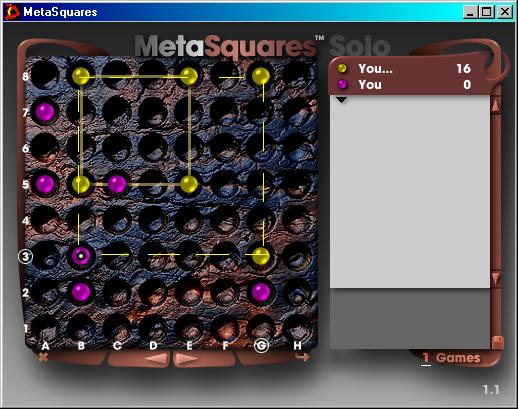
Yellow is blocked! That square would have been worth 36 points had it been completed. Blocking, or placing a stone in a spot that the other opponent needs to form a square, is an integral part of the game.
Here is what throws many beginners off: You may tilt squares at an angle, but they must remain squares. Other rectangles score no points (as they can be formed between any four stones).
For example:
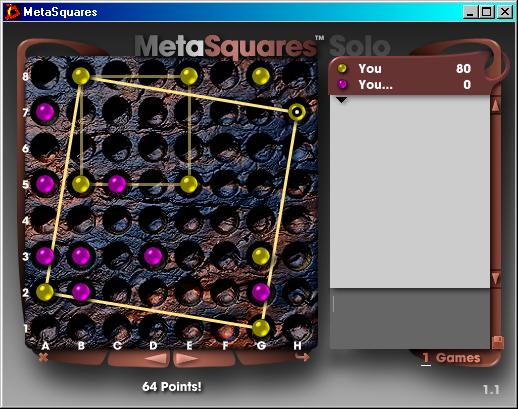
This square is worth 64 points, as its area is 64 stones (because the side length, the distance between two adjacent stones, is 8 stones. Remember the distance formula: D = √[(x - x0)2 + (y - y0)2]). This is the largest single square you can make on an 8x8 grid, though you can earn more points in a single move by creating multiple squares that share a vertex.
In time, you will learn to recognize the score of each square on sight. For now, an easy way to determine the score of a square is to count the number of spaces across between two stones, including one of them, add it to the number of spaces down between the same stones, and square it. Another method for the more visuospatial among us is to mentally rotate the square until it is straight, then count the number of spaces across and square it.
As if this weren't complex enough, there is one more vital “beginner” topic, without which you will surely lose against more advanced players: The fork.
As in chess, forks are situations where one player attacks in two places. The other player can only block one square; thus, there is a guarantee that the forking player will have the option to score points (though it may not always be wise to do so; more on this in a moment).
Forks can be very decisive in the outcome of the game, as most experienced players will block any single threat easily. Here's an example of one:
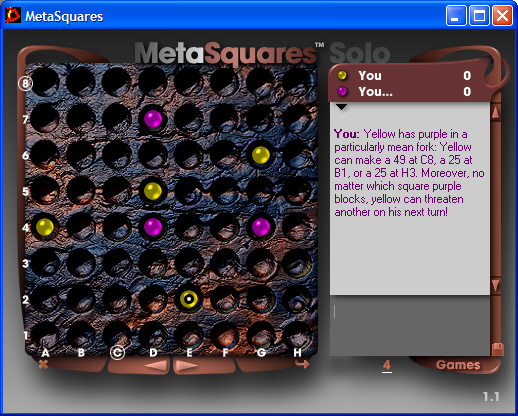
The obvious reaction is to block the more valuable square. In this case, this is correct. However, let us consider another fork later in the game:
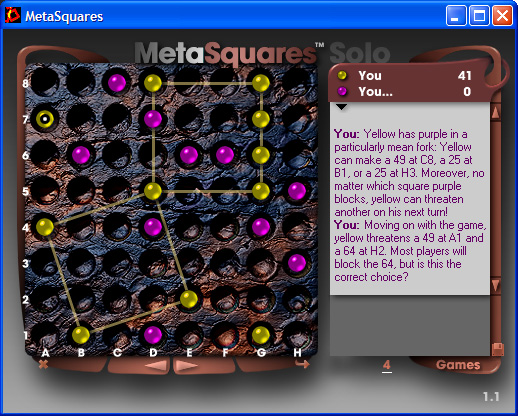
Which square would you block?
Scenario I: Purple blocks the 64 point square.
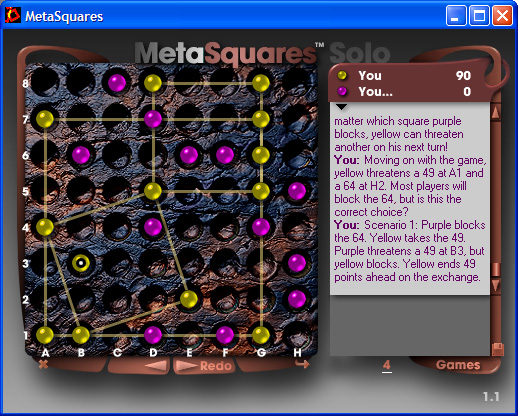
Yellow takes the 49 point square. Purple can't retaliate, and so ends 49 points behind on the exchange.
Scenario II: Purple blocks the 49 point square.
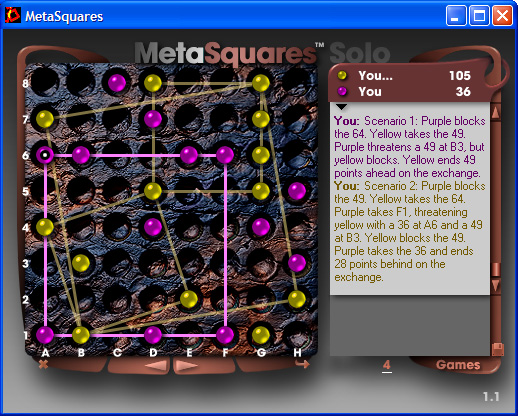
Yellow takes the 64 point square. Purple retaliates with a 49/36 point fork. Yellow blocks the 49, purple takes the 36, and purple ends only 28 points behind on the exchange.
Always think a fork through carefully. The easiest answer isn't always the correct one!
Finally, there will be situations where you will make even exchanges. Even though there is no difference between the number of points being exchanged, the game becomes much more difficult to win when your opponent nears 150. A 138-125 lead is better than a 102-89 lead!
You now know enough to play most opponents. However, you won't find many opponents willing to accept your challenges in the future if you don't follow proper etiquette. Always thank your opponent for playing. It's customary to say “good game”, or “gg”, after a game. If you want to decline a challenge, always explain why to your opponent (automatically declined challenges will automatically specify the reason to the opponent). If you suspect cheating, politely inform your opponent and report the incident to an administrator. You don't have to modify your game when playing a beginner, but you should not leave harsh comments about a player's choice of moves. Try to be constructive and helpful in your criticism.
At this point, you are aware of all of the techniques that you will need to stand a chance of winning a game with most players. If you are interested in learning more advanced techniques, such as formations (which were used extensively in the last few images of the tutorial), you should refer to Cubist's page.